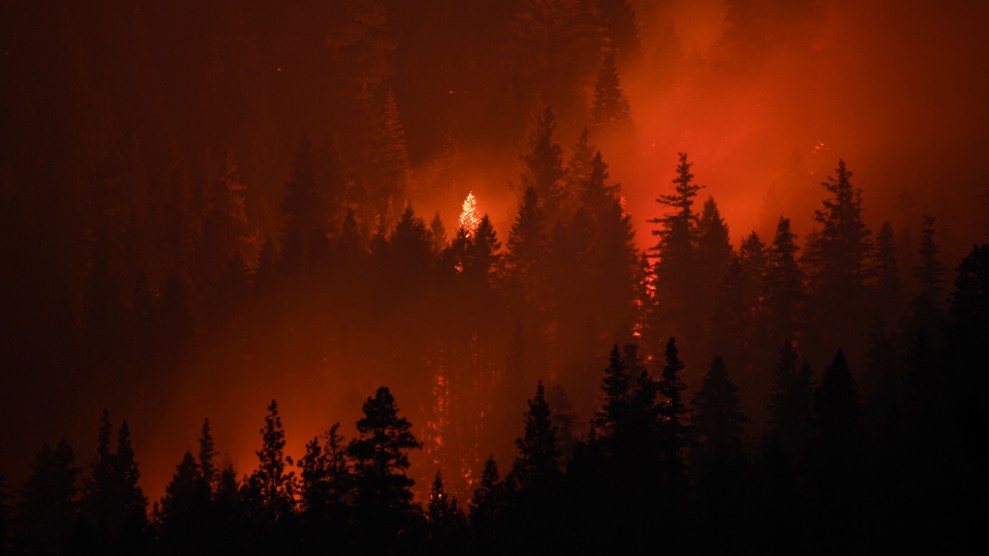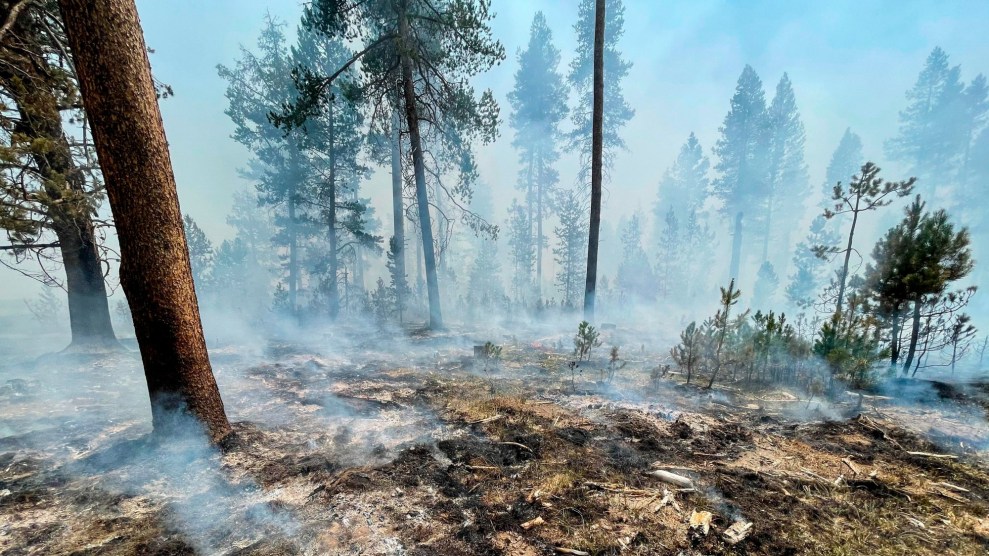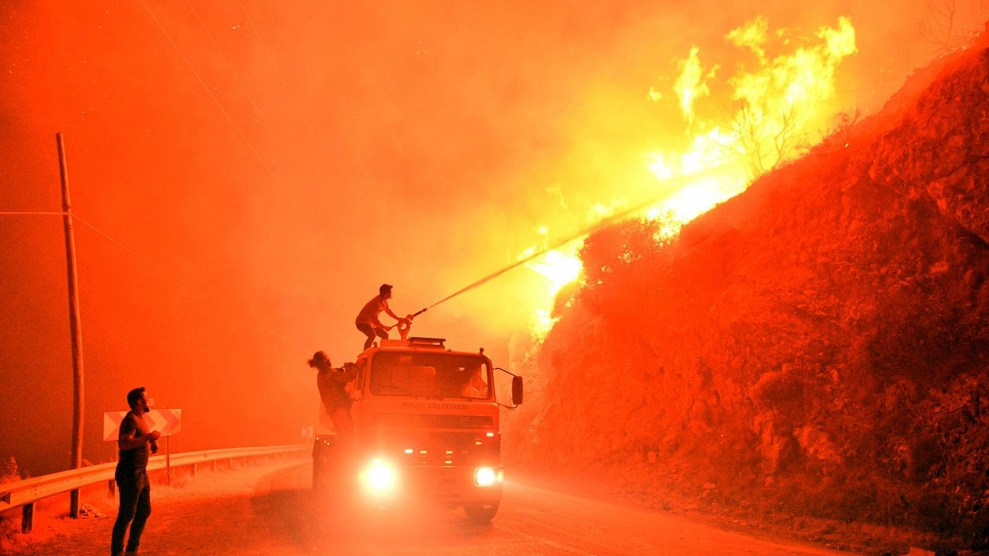
In this long exposure image taken at night, plumes of wildfire smoke rise as trees burn during the Dixie Fire near Susanville, Calif.Patrick T. Fallon/AFP/Getty
This story was originally published by Wired and is reproduced here as part of the Climate Desk collaboration.
Wildfire are normally a critical component of a healthy landscape, but these blazes are now metastasizing into monsters that obliterate ecosystems. A wildfire that would once chew through a few dozen acres of underbrush, making way for new plant growth, now burns with extreme ferocity, producing so much heat and smoke that it can generate its own thunderclouds, which light more fires. Huge fires now regularly blacken swaths of land: California’s Dixie Fire has burned 950 square miles over the past month, making it the second largest fire in state history—and it’s only 31 percent contained.
Two factors have collided to turn “good” fires into “bad” ones: climate change and, ironically enough, a history of fire suppression. Climate change means that vegetation is drier and primed to burn catastrophically. Extinguishing burns, especially those that threaten lives and structures, means that mountains of that fuel have built up.
But before we unpack what went wrong, it helps to understand how wildfires interacted with the landscape before Europeans invaded the western United States and Canada. Historically, fires acted as a kind of ecological reset button. If a lightning storm ignited shrubs and grasses, the fire would spread through a forest’s understory. This was particularly important in dry forests like California’s, where there isn’t as much microbial activity to break down dead vegetation as there is in rain forests.
Getting rid of all that plant litter removed a sort of suffocating blanket over the ground, which would have otherwise nixed growth. It also made room for new plants, which are more nutritious for herbivores. New berries would feed bears, new grasses would feed animals like deer, and new wildflowers would feed pollinating insects. “Species such as most of our ungulates—deer, elk, those kinds of critters that are very mobile—love those big patches out there, burned forest next to unburned forest,” says Dave Peterson, a forest biologist at the University of Washington. “So they have new forage and they also have cover”—the tree canopy provided by the unburned parts of the forest.
The fires were also good for plant ecology; they ensured that none of the species overgrew. Many tree species have adapted to fire, thanks to their thicker bark, which helps them survive to repopulate the forest. But fire also keeps their populations in check; the blaze will wipe out sickened individuals and those too young to have grown a sufficiently thick bark. The seedlings of the remaining trees thrive in the burn scar, where the soil has now been injected with nutrients from all that charred material, and where more light is able to reach the ground.
















